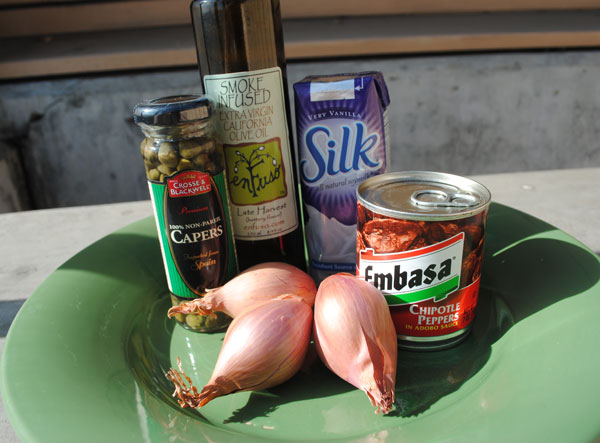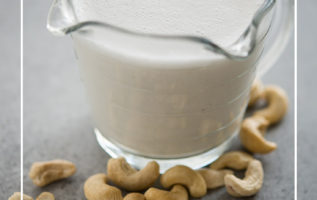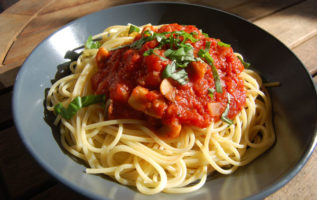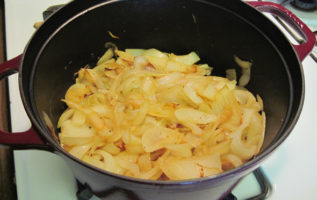
It’s the new year, that time when we make resolutions, ponder life’s big questions and wonder how that last year flew by so quickly. Oftentimes the first of these involves diets, and with them, vows to eat better.
Before you roll your eyes, don’t worry: This isn’t necessarily an article about nutrition or how to shed calories. Rather, it’s suggestions on five foods to try that may be new to you – all of which do happen to boost flavor in a relatively healthful way.
These foods are not usually eaten alone, and that’s the beauty of them: They can make a dish that’s tried and true better, and can be used in lieu of ingredients that are higher in fat and/or calories. They can introduce flavors you may not be familiar with, and are all ripe for experimentation.
Here are the five foods that top my recommended list of ones to try in the new year. I hope those that are new to you will find their way into your kitchen in 2012.
CAPERS
It’s hard to believe so much flavor can be packed into something so small. Capers are actually the bud of a flowering plant. These little orbs are easily found bottled in the same section of the store where you would find pickles and olives. On the bottles, capers may be labeled “non-pareil,” which refers to their size. The term refers to capers up to 7 millimeters. While other sizes are available these are considered the most prized. Capers are packed in a brine, a salty solution, and should be rinsed with cold water before using. They will add a salty burst and a bit of crunch to any dish you use them in, from salad dressing to a cooked sauce. I like to use them chopped up as a “secret” ingredient in tuna salad.
CHIPOTLE PEPPERS
Yes, it’s more than just a fast-casual Mexican restaurant chain. Chipotles are actually jalapenos that have been smoked and dried. While you can buy them like that, they are most easily found moist in cans. They are moist because they are bathed in a spicy, addicting red sauce called adobo. Fair warning: these things are hot, but they’re also delicious. They can be used on everything from traditional Mexican fare like tacos and burritos to eggs and baked potatoes. I’m a big fan of the Embasa brand, which can be usually be found with salsas and hot sauce at most major markets. Try a little bite of one first to see if you can handle the heat.
GOOD OLIVE OIL
By “good” I mean extra-virgin. That description has nothing to do with the sanctity of the olives that are used to make these. When olive oil is labeled “extra-virgin,” it means that the oil is extracted from the first pressing of the olives, which yields the best flavor. Of these, the ones that tend to taste best are “cold-pressed” olive oils, meaning the oil is extracted without heat or chemicals, which tarnish flavor. Because this stuff can be pricey, it’s best to use it in smaller amounts on finished foods or as a base for good salad dressings. Some high-end olive oil is now even being flavored, and is coming from places other than Spain or Italy. In fact, a new Orange County based company called Enfuso has recently started selling a smoke-infused variety from California olives. I like to use a few drops on fish to give it a smoky essence.
SOY MILK
This has become my regular substitute for milk from cows, since I’m trying to lessen my dairy intake. And I love it. Soy milk is plant-based since it’s made from soybeans, yet contains nearly as much protein as traditional cow’s milk. I’ve also found that it seems to last longer in my fridge vs. milk from cows. I use it cold and love its nutty flavor when mixed with cereal. Flavored varieties are also available (I recommend vanilla), as are light versions with half the fat and fewer calories. You can also cook with soy milk. Silk, one of the biggest sellers of the stuff, has recipes on its website, silksoymilk.com.
SHALLOTS
Think of these as onions that look like giant garlic bulbs. I like shallots because they are milder than onions, yet still provide the crunch and visual appeal of their stronger-tasting relative. Because shallots can be quarter the size of brown onions, you’ll need to use more of them if doing a straight substitution. And like onions, they need to be peeled. To use them, cut in half with a sharp knife to create a flat and stable surface, peel the parchment like exterior, then chop and use as you would a regular onion, either raw or cooked.
So there you go: My five to try for 2012. Do you have foods you’d like to recommend others try? Share in the comments area below!
Source: iwanttocook.com (defunct blog)
































